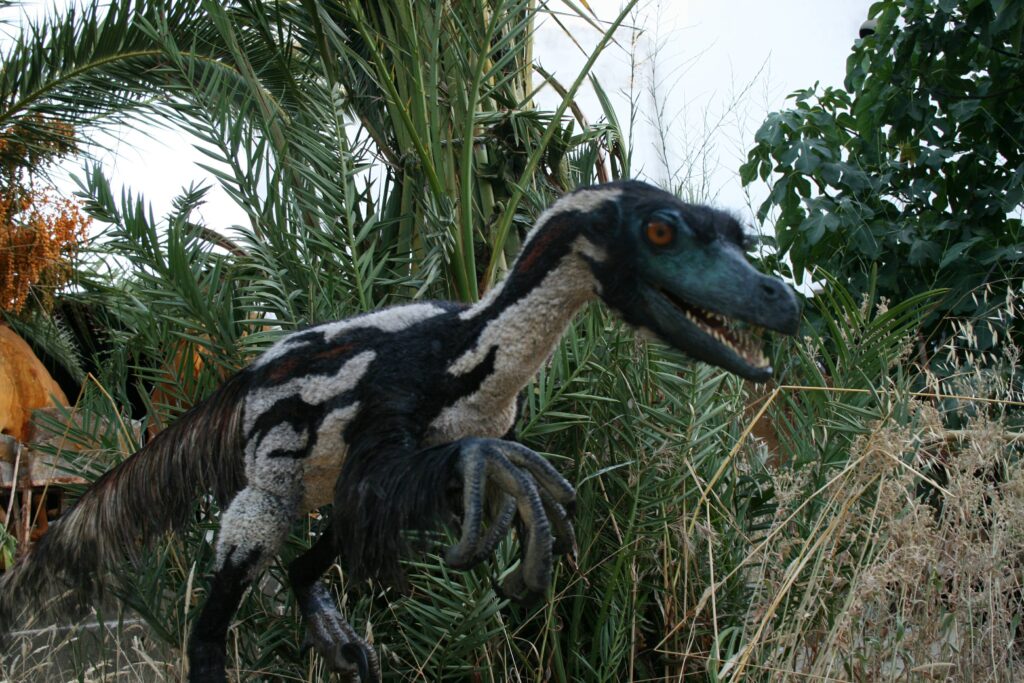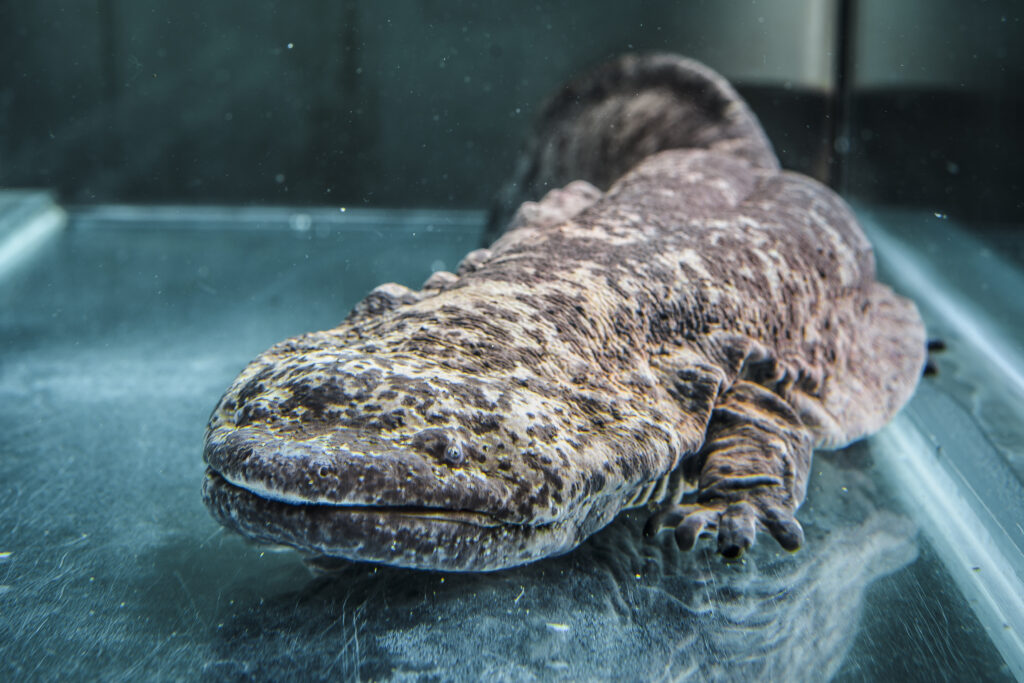When we think of dinosaurs, colossal beasts like Tyrannosaurus rex and Brachiosaurus often come to mind. However, the prehistoric world was also home to remarkably small predatory dinosaurs that wielded outsized influence in their ecosystems. These diminutive hunters proved that lethal efficiency didn’t always require massive size. From the chicken-sized Compsognathus to the cat-sized Microraptor, these miniature predators evolved specialized adaptations that made them formidable hunters despite their small stature. In this exploration of prehistoric life, we’ll examine the fascinating world of the smallest carnivorous dinosaurs that once roamed the Earth—tiny terrors that remind us that in evolution, effectiveness often matters more than size.
Compsognathus: The Chicken-Sized Hunter
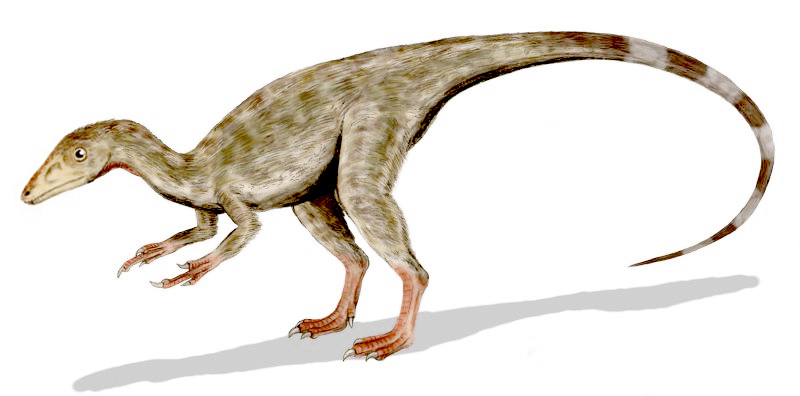
Compsognathus holds the distinction of being one of the smallest known dinosaurs, measuring approximately the size of a modern chicken at just 2-3 feet (60-90 cm) in length and weighing only about 5-7 pounds (2.5-3.5 kg). This diminutive predator lived during the Late Jurassic period, approximately 150 million years ago, in what is now Europe. Despite its small size, Compsognathus was a swift and efficient predator, with fossil evidence revealing the remains of small lizards preserved within its ribcage, providing direct evidence of its diet. Its slender body, long neck, and lightweight skeleton made it perfectly adapted for quick movements to catch fast-moving prey. Paleontologists believe Compsognathus likely hunted in the dense undergrowth of Jurassic forests, where its small size would have been advantageous for navigating tight spaces while pursuing prey.
Microraptor: The Four-Winged Predator
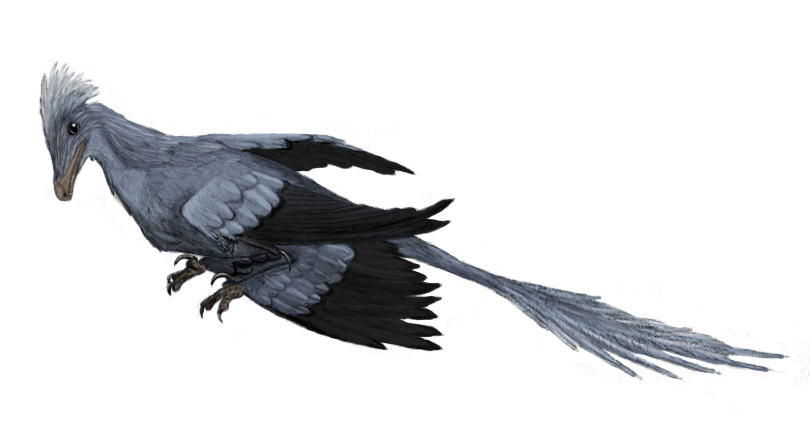
Perhaps one of the most remarkable small predatory dinosaurs was Microraptor, a crow-sized dromaeosaurid that lived during the Early Cretaceous period, approximately 120 million years ago in what is now China. What makes Microraptor truly extraordinary was its possession of four wings—feathered forelimbs and hindlimbs that likely enabled some form of gliding or limited flight capabilities. Weighing less than 2 pounds (1 kg) and measuring only about 2.5 feet (77 cm) in length, Microraptor represents an evolutionary experiment in aerial predation among dinosaurs. Fossil evidence has revealed that this tiny predator had a varied diet, with specimens containing the remains of fish, birds, and small mammals in their stomach regions. This suggests Microraptor was an opportunistic hunter that could pursue prey across different environments, potentially gliding from trees to ambush victims below or even catching small arboreal creatures among the branches.
Hesperonychus: North America’s Smallest Known Predator

Hesperonychus elizabethae stands as the smallest known carnivorous dinosaur discovered in North America, roaming what is now Alberta, Canada during the Late Cretaceous period, roughly 75 million years ago. This miniature dromaeosaurid measured approximately 1.6-2 feet (50-60 cm) in length and weighed only about 4-5 pounds (1.8-2.3 kg)—roughly the size of a modern domestic cat. Like its larger velociraptor relatives, Hesperonychus possessed a characteristic enlarged sickle-shaped claw on each foot, which it likely used to dispatch prey with deadly efficiency. The discovery of Hesperonychus was particularly significant because it demonstrated that small predatory dinosaurs existed alongside their massive counterparts in North American ecosystems. Paleontologists hypothesize that Hesperonychus likely hunted small mammals, lizards, and possibly even juvenile dinosaurs, occupying an ecological niche that larger predators couldn’t exploit.
Epidexipteryx: The Bizarre Miniature Predator
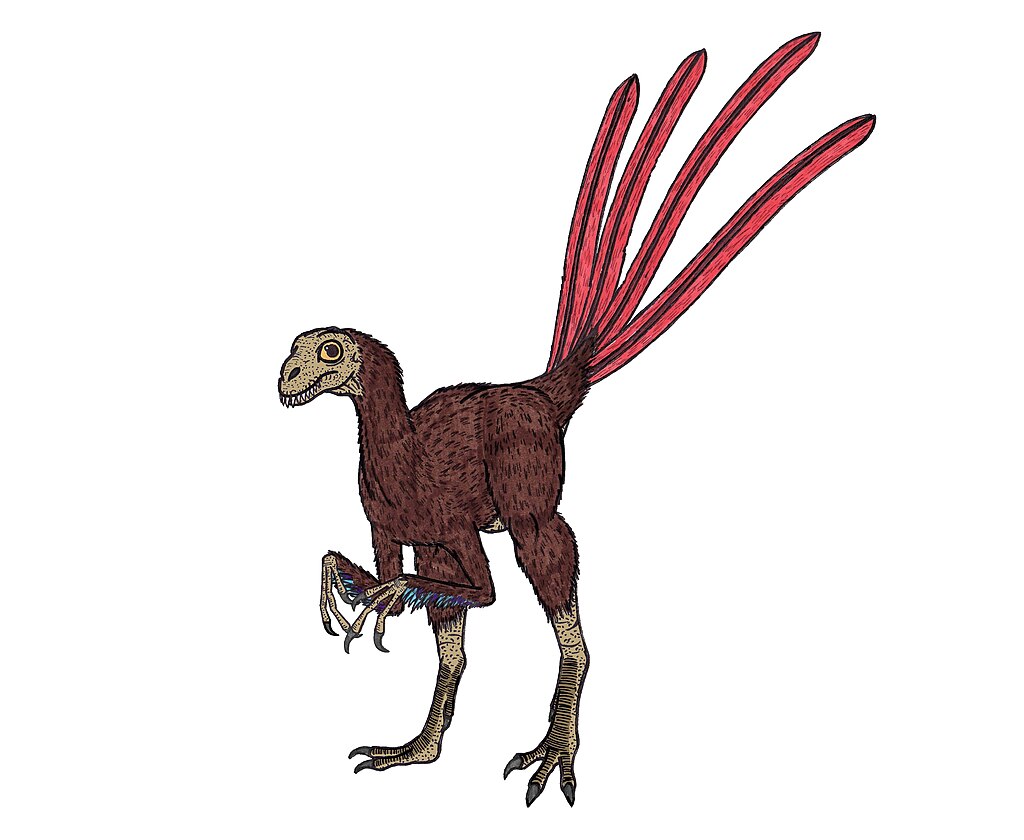
Among the strangest of the small predatory dinosaurs was Epidexipteryx hui, a peculiar creature that lived during the Middle to Late Jurassic period, approximately 160 million years ago in what is now Inner Mongolia, China. With a body measuring just 10 inches (25 cm) in length (excluding its tail feathers), this pigeon-sized dinosaur weighed less than a pound. Epidexipteryx belonged to a group called scansoriopterygids, characterized by unusually elongated third fingers that may have been used for probing into crevices for insects and other small prey. What made Epidexipteryx particularly bizarre were its four long, ribbon-like tail feathers that appear to have been ornamental rather than functional for flight. Unlike many other feathered dinosaurs, Epidexipteryx had simple, hair-like feathers on its body but lacked the more complex feathers on its arms that would have been necessary for flight. Paleontologists believe this tiny predator was likely adapted for climbing trees and feeding on insects, small vertebrates, and possibly eggs.
Bambiraptor: The Teenage Assassin

Bambiraptor feinbergi represents one of the most complete small predatory dinosaur fossils ever discovered, found in Montana in 1993 and dating to the Late Cretaceous period, approximately 75 million years ago. This turkey-sized dromaeosaurid measured about 3 feet (0.9 meters) long and stood about 1.5 feet (0.45 meters) tall, with a weight estimated at around 4.5 pounds (2 kg). Despite its small size, Bambiraptor possessed physical characteristics that made it a formidable predator, including sharp teeth, grasping hands with three clawed fingers, and the distinctive enlarged sickle claw on each foot characteristic of dromaeosaurids. What makes the Bambiraptor discovery particularly interesting is that the specimen found was a juvenile, approximately 75% grown, indicating the adult size would still have been quite small. Remarkably, Bambiraptor had a large brain relative to its body size, with a brain-to-body mass ratio similar to that of modern birds, suggesting it was likely a highly intelligent hunter with good vision and coordination.
Mei long: The Sleeping Dragon
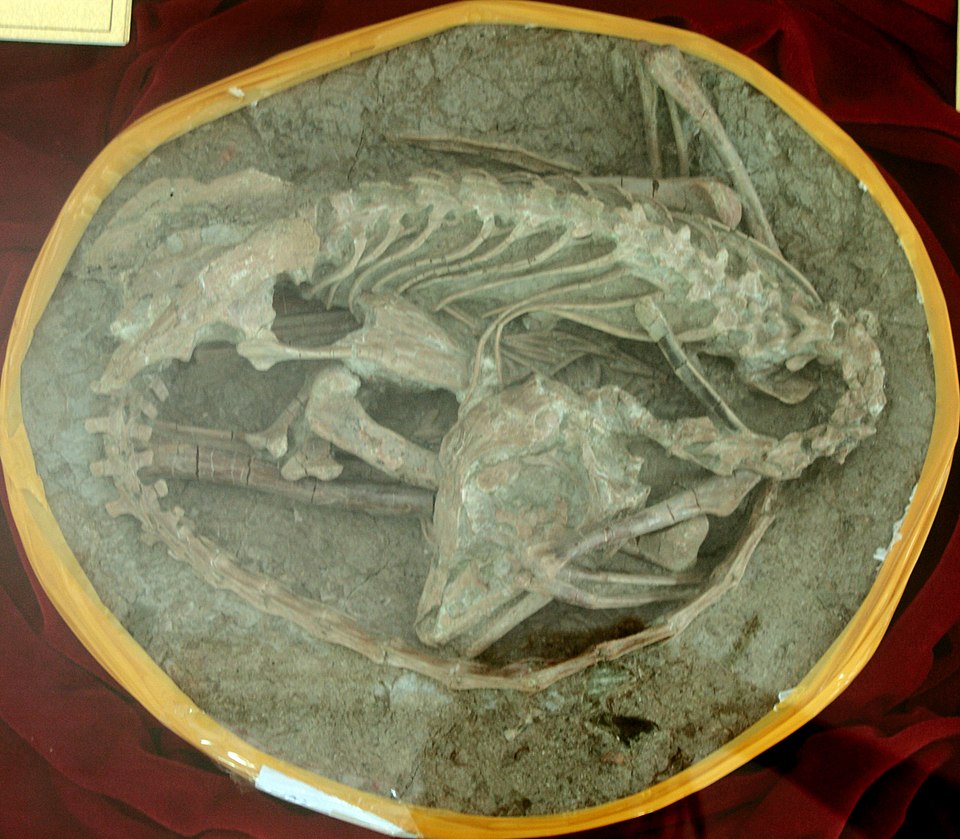
Mei long, whose name appropriately means “sleeping dragon” in Chinese, represents one of paleontology’s most poignant fossil discoveries—a tiny predatory dinosaur preserved in a bird-like sleeping position. This troodontid dinosaur lived during the Early Cretaceous period, approximately 130 million years ago, in what is now China’s Liaoning Province. Measuring just 20 inches (50 cm) in length, Mei long was about the size of a modern crow and likely weighed less than 2 pounds (1 kg). What makes this diminutive predator especially noteworthy is the remarkable sleeping posture preserved in its fossil—curled up with its head tucked under its arm, nearly identical to the sleeping position of modern birds. This provides compelling evidence of the evolutionary relationship between dinosaurs and birds while offering a rare glimpse into dinosaur behavior. Though small, Mei long possessed the characteristic features of troodontids, including serrated teeth, large eyes, and an enlarged sickle claw on each foot, suggesting it was an effective nocturnal predator that likely hunted insects, small mammals, and possibly other small dinosaurs.
Sinornithosaurus: The Venomous Possibility
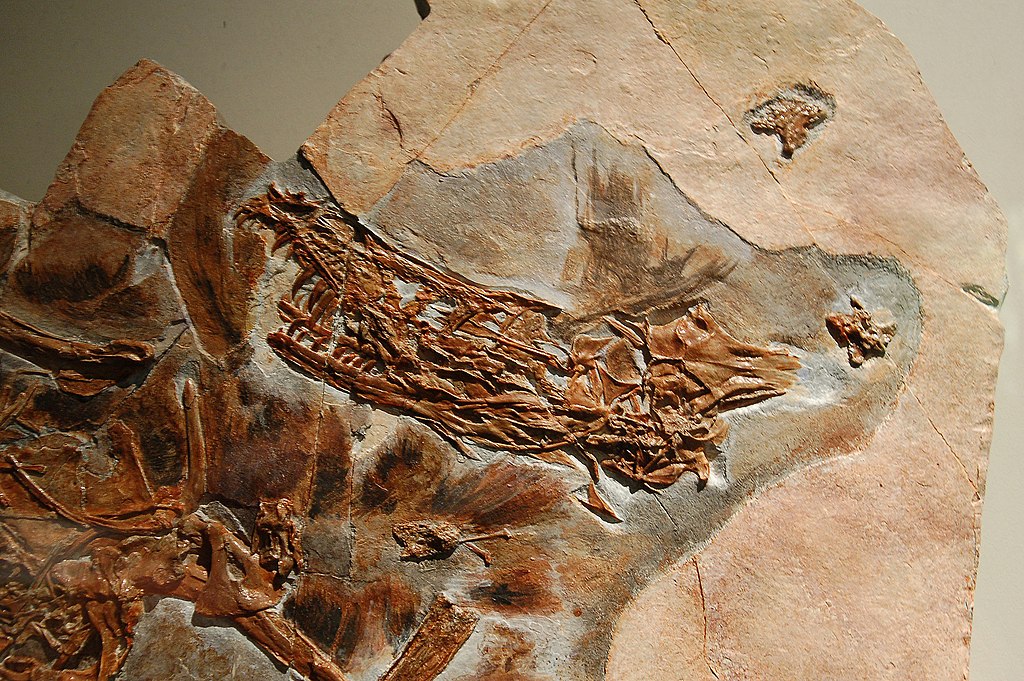
Sinornithosaurus millenii, discovered in China’s Liaoning Province and dating to the Early Cretaceous period approximately 125 million years ago, has generated significant scientific debate as potentially the first discovered venomous dinosaur. This cat-sized dromaeosaurid measured about 3 feet (90 cm) in length and weighed approximately 6-8 pounds (3-4 kg). In 2009, researchers proposed that Sinornithosaurus possessed specialized grooved teeth similar to those found in modern venomous reptiles, along with a possible venom delivery system that included depressions that might have housed venom glands. According to this controversial hypothesis, Sinornithosaurus may have used venom to subdue prey, possibly specializing in hunting small birds that were abundant in its forest habitat. While subsequent studies have challenged this interpretation, suggesting the tooth features might be the result of preservation artifacts or misinterpretation, the possibility of venomous dinosaurs remains a fascinating area of paleontological research. Regardless of whether it delivered venom, Sinornithosaurus was certainly a feathered, agile predator well-adapted for pursuing small prey through the densely forested environments of Cretaceous China.
Mahakala: The Time-Defying Tiny Predator

Mahakala omnogovae, discovered in Mongolia’s Gobi Desert, represents one of the most scientifically significant small predatory dinosaurs due to its evolutionary importance. Dating to the Late Cretaceous period, approximately 80 million years ago, this diminutive dromaeosaurid measured just 2.3 feet (70 cm) in length and likely weighed less than 5 pounds (2.3 kg). What makes Mahakala particularly noteworthy is that despite living relatively late in dinosaur evolutionary history, it retained primitive features that helped paleontologists better understand the ancestral form of dromaeosaurids and their relationship to birds. The small size of Mahakala challenged previous assumptions that the ancestors of birds underwent progressive size reduction, instead suggesting that small size was actually the ancestral condition for this group, with larger dromaeosaurids like Velociraptor representing size increases rather than the reverse. With short arms, long legs, and the characteristic enlarged foot claw of dromaeosaurids, Mahakala was likely an agile predator that hunted small vertebrates in the ancient Gobi ecosystem, demonstrating the evolutionary success of small predatory dinosaur designs.
Halszkaraptor: The Duck-Like Swimmer
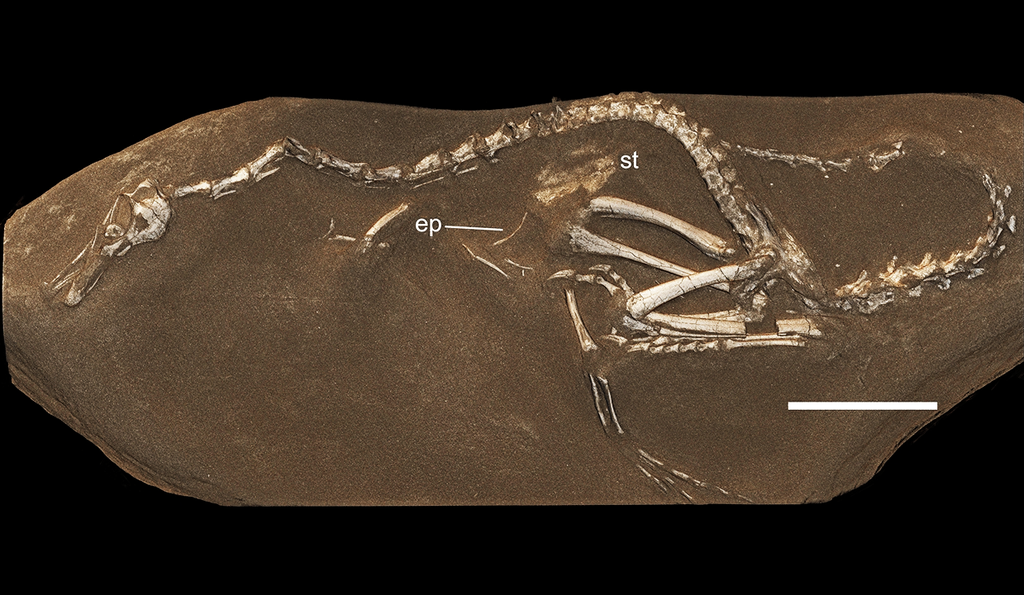
Perhaps one of the most unusual small predatory dinosaurs ever discovered is Halszkaraptor escuilliei, which lived during the Late Cretaceous period, approximately 75 million years ago, in what is now Mongolia. About the size of a modern duck at roughly 2-3 feet (60-90 cm) in length, this bizarre dinosaur appears to have been semi-aquatic, representing the first clear example of a swimming predatory dinosaur. Halszkaraptor possessed a remarkable combination of features never before seen together in a dinosaur, including a long, swan-like neck, flipper-like forelimbs that resembled those of modern diving birds, and a bill-like snout filled with numerous small teeth ideal for catching fish. Using advanced synchrotron scanning technology, researchers were able to examine the fossil while it was still partially embedded in rock, confirming its unusual anatomical features and ruling out the possibility of a fabricated chimera specimen. Paleontologists believe Halszkaraptor likely hunted in shallow waters, using its sensitive snout to detect prey and its flipper-like forelimbs to maneuver while swimming, representing a previously unknown ecological adaptation among small predatory dinosaurs.
Anchiornis: The Proto-Bird Predator

Anchiornis huxleyi represents a critical transitional form between dinosaurs and birds, providing valuable insights into the evolution of flight. This crow-sized predator lived during the Late Jurassic period, approximately 160-155 million years ago, in what is now northeastern China. Measuring only about 13-16 inches (34-40 cm) in length and weighing less than 2 pounds (1 kg), Anchiornis possessed a combination of dinosaurian and avian features that place it at a fascinating evolutionary juncture. What makes Anchiornis particularly remarkable is the exceptional preservation of its fossils, which have revealed details of its feather structure and coloration. Through chemical analysis of fossilized melanosomes (pigment-bearing organelles), scientists determined that Anchiornis had a primarily black and white plumage pattern with a reddish crown on its head—making it one of the few dinosaurs whose actual coloration is known with reasonable certainty. While small, Anchiornis was an active predator with sharp teeth and claws, likely hunting insects and other small prey in the Jurassic forests. Its limbs were covered in large, vaned feathers, forming wing-like structures on both its arms and legs, though it remains debated whether it could truly fly or merely glide between trees.
Shuvuuia: The Desert Swift
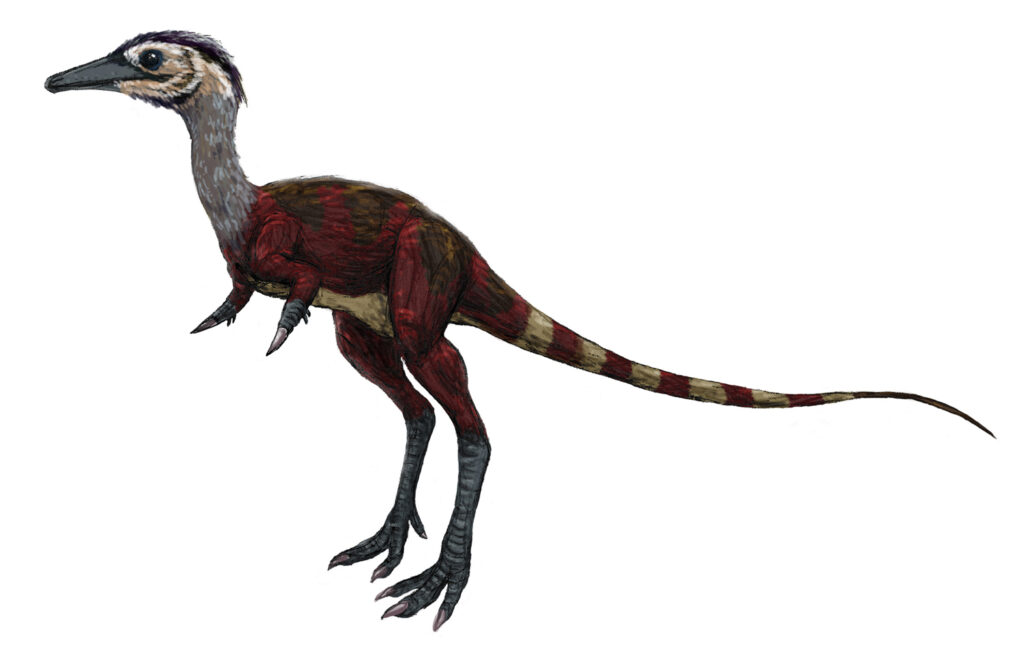
Shuvuuia deserti represents one of the most specialized small predatory dinosaurs ever discovered, perfectly adapted for life in an ancient desert environment. Living during the Late Cretaceous period, approximately 75-81 million years ago, in what is now Mongolia’s Gobi Desert, this chicken-sized alvarezsaurid measured only about 2-3 feet (60-90 cm) in length and weighed roughly 5-10 pounds (2.5-4.5 kg). What made Shuvuuia truly remarkable were its highly specialized adaptations, including extraordinarily large eyes that suggest it was nocturnal, likely hunting at night when desert temperatures cooled. Recent research using cutting-edge techniques has revealed that Shuvuuia possessed both exceptional night vision and acute hearing, similar to modern owls and nightjars, making it uniquely adapted for nocturnal hunting among known dinosaurs. Perhaps its most bizarre feature was its forelimbs, which were extremely short but powerful, with a single enlarged digit bearing a massive claw. Paleontologists believe these specialized arms were used to dig into termite mounds or tear apart rotting logs to extract insects, similar to modern anteaters, though they would have been equally useful for breaking through the crusty surface of desert soils to uncover hiding prey.
Ecological Importance of Small Predatory Dinosaurs

The ecological significance of small predatory dinosaurs cannot be overstated, as they occupied crucial niches within prehistoric ecosystems that larger predators could not fill. These diminutive hunters likely played vital roles in controlling populations of insects, small reptiles, and early mammals, creating important checks and balances within their food webs. The diversity of small predatory dinosaurs—from tree-climbing specialists to semi-aquatic forms to potential nocturnal hunters—demonstrates how adaptable these animals were in exploiting various ecological opportunities. Their small size allowed them to thrive in microhabitats inaccessible to larger predators, such as dense underbrush, tree canopies, and possibly burrows or caves. Perhaps most importantly, these small predatory dinosaurs represented crucial evolutionary experiments that ultimately led to birds, the most diverse group of land vertebrates alive today. By studying the adaptations and lifestyles of these miniature predators, paleontologists gain valuable insights into how ecosystems functioned over millions of years and better understand the evolutionary pathways that produced the remarkable diversity of predatory strategies we see in modern animals.
The Evolutionary Significance of Miniaturization

The trend toward small body size in certain lineages of predatory dinosaurs represents a fascinating evolutionary phenomenon with far-reaching implications. Miniaturization in these dinosaurs wasn’t merely a reduction in size but often accompanied the development of new adaptations and capabilities that wouldn’t have been possible in larger forms. The reduction in body size allowed for the evolution of features critical to the origin of flight, as smaller bodies required less power to become airborne. This process of miniaturization was particularly important in the theropod lineage that eventually gave rise to birds, where progressive size reduction was accompanied by the elaboration of feathers, modifications to the forelimbs, and changes in metabolism. The fossil record reveals that many of the features we associate with birds—including feathered bodies, wishbones, and air-filled bones—first appeared in small-bodied predatory dinosaurs rather than their larger relatives. Interestingly, miniaturization appears to have occurred multiple times independently within different dinosaur lineages, suggesting it represented a successful evolutionary strategy when environmental conditions favored smaller predators. Perhaps most significantly, the small predatory dinosaurs that survived the end-Cretaceous extinction event that wiped out their larger relatives were ultimately the ancestors of the more than 10,000 species of birds alive today, demonstrating the long-term evolutionary advantages that sometimes come with being small.
Hunting Strategies of Miniature Predators
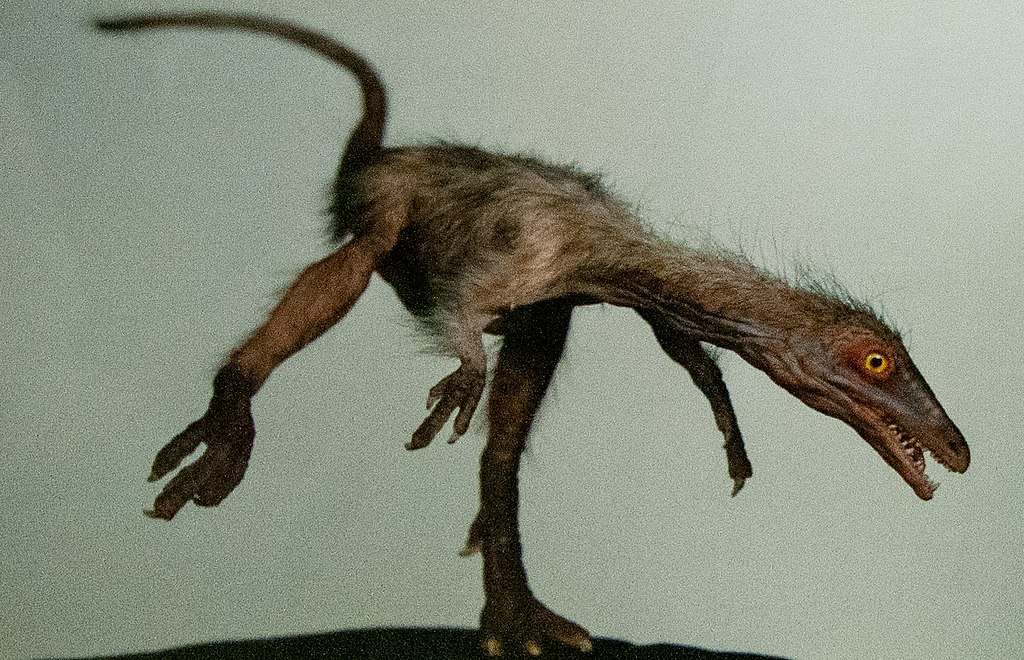
Despite their small size, these tiny predatory dinosaurs were masters of specialized hunting techniques tailored to their unique ecological niches. Compsognathus relied on swift, agile movements to chase down lizards and small prey in dense undergrowth, using its slender body to navigate tight spaces. Microraptor exploited its four wings to glide from tree to tree, ambushing fish, birds, and mammals in a versatile aerial hunting style. Nocturnal hunters like Shuvuuia used keen night vision and acute hearing to stalk prey under the cover of darkness, while others such as Epidexipteryx used elongated fingers to probe crevices for insects. Semi-aquatic predators like Halszkaraptor adapted flipper-like limbs and sensitive snouts to hunt fish in shallow waters. Collectively, these small dinosaurs displayed remarkable behavioral and anatomical adaptations—speed, stealth, climbing, gliding, swimming, and sensory specialization—that made them effective hunters despite their miniature size.
Conclusion

The smallest predatory dinosaurs were far from insignificant; their diverse hunting strategies and evolutionary innovations reveal a dynamic and adaptable group that filled ecological roles inaccessible to larger predators. Their miniaturization not only enabled unique lifestyles—ranging from nocturnal insectivory to aerial ambush and aquatic foraging—but also paved the way for the evolution of birds, underscoring the profound impact of small size in dinosaur evolution. By mastering niches in forest canopies, deserts, lakes, and underbrush, these tiny terrors shaped prehistoric ecosystems and left a lasting legacy as the ancestors of modern avian diversity. Their story reminds us that in evolution, sometimes being small is the ultimate survival advantage.

